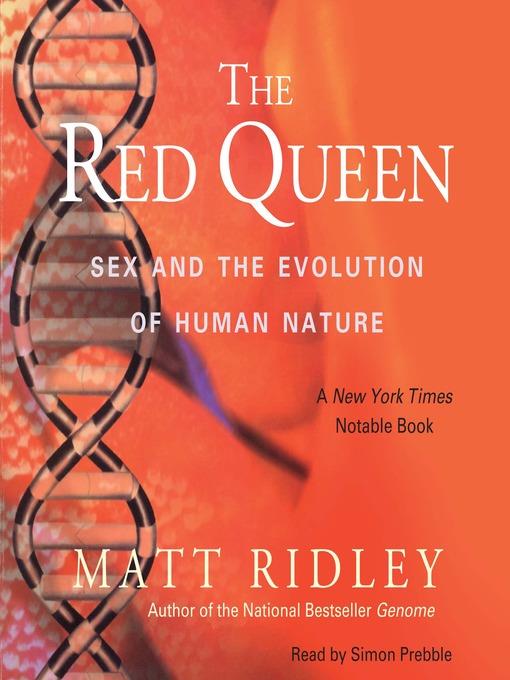
The Red Queen
Sex and the Evolution of Human Nature
کتاب های مرتبط
- اطلاعات
- نقد و بررسی
- دیدگاه کاربران
نقد و بررسی

Exploring the Red Queen Hypothesis (named after the Red Queen of Alice in Wonderland), Ridley's book is executed in a sturdy English accent by Simon Prebble. With clear prose and excellent examples, Ridley explores the nuanced scientific debates on why many species (especially humans) have two sexes instead of one, three, or more. His discussion can be daunting and hard to follow unless one rewinds, but Prebble alleviates some mental exhaustion with great use of pause, emphasis, and deliberateness. His only shortcoming is his comedic delivery. Several times, Ridley drops in an amusing line that Prebble reads straight, causing the listener some confusion. L.E. (c) AudioFile 2011, Portland, Maine

January 3, 1994
Why do we have sex? One of the main biological reasons, contends Ridley, is to combat disease. By constantly combining and recombining genes every generation, people ``keep their genes one step ahead of their parasites,'' thereby strengthening resistance to bacteria and viruses that cause deadly diseases or epidemics. Called the ``Red Queen Theory'' by biologists after the chess piece in Lewis Carroll's Through the Looking-Glass which runs but stays in the same place, this hypothesis is just one of the controversial ideas put forth in this witty, elegantly written inquiry. Ridley, a London-based science writer and a former editor of the Economist , argues that men are polygamous for the obvious reason that whichever gender has to spend the most time and energy creating and rearing offspring tends to avoid extra mating. Women, though far less interested in multiple partners, will commit adultery if stuck with a mediocre mate. In Ridley's not wholly convincing conclusion, even human intellect is chalked up to sex: virtuosity, individuality, inventiveness and related traits are what make people sexually attractive. Photos. BOMC and QPB alternates.

























دیدگاه کاربران